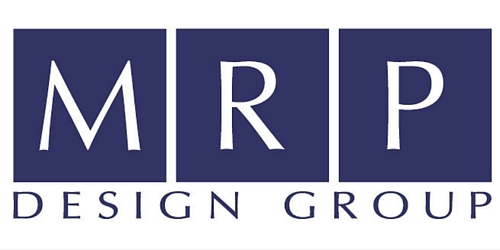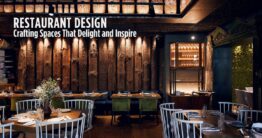
The highly competitive hospitality industry is always looking for the latest innovative ideas to keep them winning in the struggle to keep guests happy. Although a hotel’s services and amenities are still important and always will be for guests, what’s becoming even more important is the hotel’s ambiance—or how it makes guests feel. Today’s modern guests (especially the coveted Millennials) want a home away from home, yes, but not their home. They want the ideal home. They want a place that is luxurious, different, and amazing.
Whether you’re building a new hotel or refurbishing one, here are four innovative hotel design trends that MRP Design Group has found will wow guests.
1. Going back to nature with biophilic design
Today’s modern hotels seek to bridge the gap between our actual urban, techno-savvy lifestyles and the calm simplicity of nature. While this idea has been around for a while, it has more recently been given a name: biophilic design. Simply put, biophilic design involves incorporating nature in design. It’s based on what some consider our innate tendency to seek out nature in our somewhat un-natural cities and suburbs.
Biophilic design in hotel communal spaces and guest rooms can take many forms. It can be as simple as integrating natural wood, stone, plants, and natural lighting into the design. Utilizing sustainably sourced materials and natural architectural patterns contribute further to the effect. But it can also involve more elaborate wow factors such as indoor waterfalls, large vertical gardens or living walls, and multi-level terraces. Large scenic windows that let nature in, both in guest rooms and in lobbies, contribute to the biophilic effect. Even evoking nature in elements such as a roaring fireplace or utilizing fractals in fabric designs can help bring nature indoors and create a soothing effect.
Studies show nature has a restorative, dopamine-like effect on us, and biophilic design seeks to bring that calming effect inside. Both guests and staff reap the benefits, such as better air quality, lower energy costs, and reduced stress responses, not to mention more positive guest reviews. Studies show that lobbies with biophilic design get more guest involvement, as well as non-guest involvement from the community, which brings in more revenue through the hotel coffeeshop, restaurant, bar and such. And recent reports suggest that 36% more guests spend time in lobbies designed with biophilic elements.
2. Warming up with localization, personalization, and recycled materials
While minimalism continues to be a trend in hotel design, with bold colors offsetting neutral or subdued color schemes, other trends punching up the wow factor include bringing in local flair, personalizing otherwise cookie-cutter rooms, and bringing in recycled materials. Mixing and matching furniture makes for a more unique common area as well as interesting and different guest rooms. Gone are the days of nondescript, mass-produced, mundane hotel furniture. Combining reclaimed wood, metal, and multiple fabrics and using recycled materials such as mason jars, apple boxes, and vintage furniture brings the environmental awareness trend into hotel design.
The rise of Airbnb, food trucks, and local farmers markets seems to have fueled the trend of all things local. Local color helps hotels in a chain stand out in their city. Utilizing the history of the hotel and the city through local photography, art, displays, even furniture can help the hotel stand out in the crowd. Plus the growing trend of artisanal, handcrafted, unique, and locally-sourced everything is resulting in utilizing more local artists, craftsmen, and artisans. Surveys show that today’s guests want a unique hotel that gives them a sense of place and local color and a flavor of the region.
3. Transforming sterile lobbies into more than waiting rooms
Not unlike Starbuck’s vision of being a “third place” (home and work are first and second places, respectively) where guests can gather and connect, work and socialize, the modern hotel now wants to be a more welcoming third place for the community. Sterile front desks with waiting lines are being replaced with sit-down concierge desks or even sofas where check-in is conducted via iPads while sipping wine or coffee. Hotel designs for communal areas are now incorporating not just coffeeshops, restaurants, and bars, but also unique spaces like specialized bookstores, libraries, and art galleries, creating space for guests and community alike to gather. Younger guests, used to working in public spaces like coffeeshops, don’t want to stay in their rooms. They want reliable Wi-Fi, multiple charging spots, spaces to work and socialize, and food and drink available in hotel common areas.
4. Keeping pace with technology
The most ubiquitous trend in hotel design is the race to keep pace with technological trends. This includes adding more and more charging spots in common spaces and in guest rooms. Holiday Inn’s H2 concept includes five charging spots per guest room. These are sometimes hidden by incorporating into furniture, such as inconspicuous spots on a desk or on the sides of nightstands. Other times they are used as design features. Other in-room tech features include ports for guests to watch their own media on the room’s large tv screen and controlling temperature and room services via personalized tablets or the guest’s own smartphone, which can also be used for keyless entry to the room. More trends on the horizon include music and light features in showers and wallpaper that changes color or pattern based on light and temperature.
The hotel industry is constantly changing, and MRP Design Group strives to stay ahead of the curve of architectural design trends. We have more than 28 years of experience in the hotel design field and have designed hundreds of hotel plans. Let our dedicated hotel design team assist you in developing the best architectural solution for your site. Contact us today.








